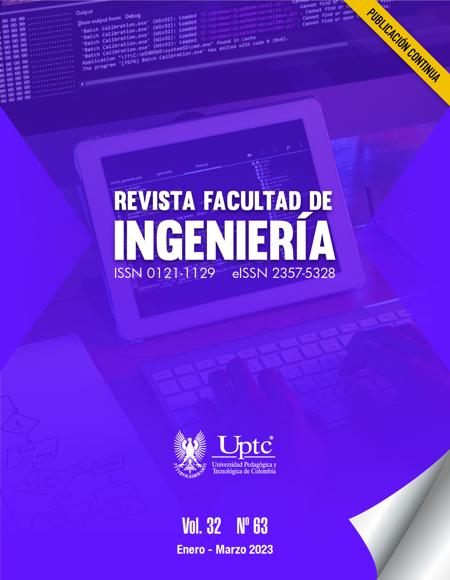Digital Image Representation Model Enriched with Semantic Web Technologies: Visual and Non-Visual Information

Abstract
The types of content of digital images, visual (syntactic and semantic) and non-visual, cause the complexity of their representation. Considering these contents separately hinders digital image retrieval because this creates a gap between the contents of the image and its representation. Therefore, this work aims to present a representation model of visual and non-visual information of digital images, with semantic enrichment through the Semantic Web technologies. For that, a qualitative methodology with a bibliographical approach was used. Theoretical subsidies of the topics addressed were sought, and it has an applied focus since it proposes a model and its exemplification. The developed model depicts the representation image process and allows the semantic enrichment of the data. This enrichment facilitates the retrieval in multiple contexts with technologies that favor the use of the data through inferences. Also, a use case with digital medical images is presented, demonstrating the feasibility of the proposal. It is concluded that the representation of visual and non-visual content aims to improve the way images are retrieved in digital information environments. The junction of the content and the context of images should be considered, even though search mechanisms usually treat this separately due to the disaggregation of image representation itself.
Keywords
Images representation, Digital image, Visual and non-visual content, Web Semantic Technologies, images enrichment
References
- E. Kalkanis, An Analysis of Erwin Panofsky's Meaning in the Visual Arts, Macat Library, 2018.
- S. Shatford, “Analyzing the subject of a picture: a theoretical approach,” Cataloging & classification quarterly, vol. 6, no. 3, pp. 39–62, 1986. https://doi.org/10.1300/j104v06n03_04 DOI: https://doi.org/10.1300/J104v06n03_04
- C. Jörgensen, “Indexing images: Testing an image description template,” in ASIS Annual Conference Proceedings, 1996, pp. 1–8.
- A. Jaimes, S. Chang, “Conceptual framework for indexing visual information at multiple levels,” in International Society for Optics and Photonics, 1999, pp. 2–15. DOI: https://doi.org/10.1117/12.373443
- J. Barreto, “Desafios e avanços na recuperação automática da informação audiovisual,” Ciência da Informação, vol. 36, no. 3, pp. 17–28, 2007. https://doi.org/10.1590/s0100-19652007000300003 DOI: https://doi.org/10.1590/S0100-19652007000300003
- F. R. E. Nunes, B. C. M. Maculan, M. B. Almeida, “Os fundamentos da Web Semântica como ferramentas de auxílio para as demandas da Sociedade da Informação,” Em Questão, vol. 26, no. 3, pp. 224-249, 2020. https://doi.org/10.19132/1808-5245263.224-249 DOI: https://doi.org/10.19132/1808-5245263.224-249
- B. Splendiani, A proposal for the inclusion of accessibility criteria in the authoring workflow of images for scientific articles, Doctoral Thesis, Universitad de Barcelona, Barcelona, Spain, 2015. DOI: https://doi.org/10.1016/j.procs.2015.09.250
- M. Pritoni et al. “Metadata Schemas and Ontologies for Building Energy Applications: A Critical Review and Use Case Analysis,” Energies, vol. 14, no. 7, pp. 2024-2030, 2021. https://doi.org/10.3390/en14072024 DOI: https://doi.org/10.3390/en14072024
- H. Bannour, C. Hudelot, “Towards ontologies for image interpretation and annotation,” in IEEE, 2011, pp. 211–216. https://doi.org/10.1109/cbmi.2011.5972547 DOI: https://doi.org/10.1109/CBMI.2011.5972547
- U. Manzoor et al. “Semantic Image Retrieval: An Ontology Based Approach,” International Journal of Advanced Research in Artificial Intelligence, vol. 1, no. 4, pp. 1–8, 2015. DOI: https://doi.org/10.14569/IJARAI.2015.040401
- M. Liaqat, S. Khan, M. Majid, "Image retrieval based on fuzzy ontology," Multimedia Tools and Applications, vol. 76, pp. 22623-22645, 2017. DOI: https://doi.org/10.1007/s11042-017-4812-9
- S. M. Roa-Martínez, S. Vidotti, M. Jorente, “Representación conceptual de imágenes médicas digitales: Integración de Contexto y Contenido Visual,” Revista General de Información y Documentación, vol. 26, no. 2, pp. 651-72, 2016. https://doi.org/10.5209/rgid.54719 DOI: https://doi.org/10.5209/RGID.54719
- K. Munir, M. S. Anjum, “The use of ontologies for effective knowledge modelling and information retrieval,” Applied Computing and Informatics, vol. 14, no. 2, pp. 116-126, 2018. https://doi.org/10.1016/j.aci.2017.07.003 DOI: https://doi.org/10.1016/j.aci.2017.07.003
- A. Tello et al. “Rdf-ization of dicom medical images towards linked health data cloud,” in VI Latin American Congress on Biomedical Engineering, 2015, pp. 757-760. https://doi.org/10.1007/978-3-319-13117-7_193 DOI: https://doi.org/10.1007/978-3-319-13117-7_193
- B. F. Lóscio, C. Burle, N. Calegari, Data on the Web Best Practices, W3C, 2017.